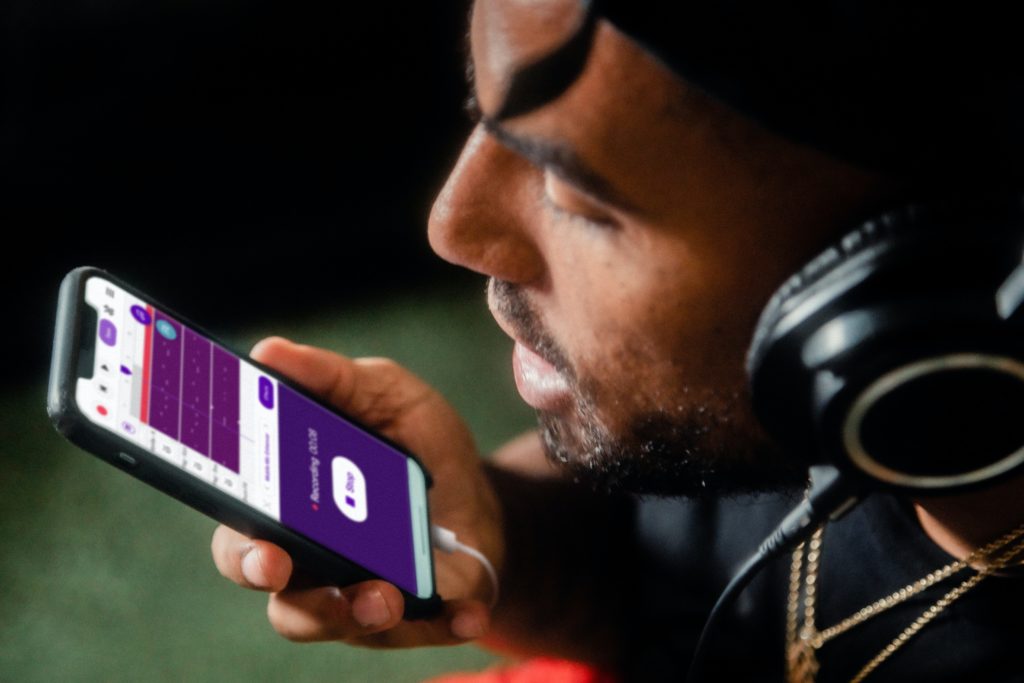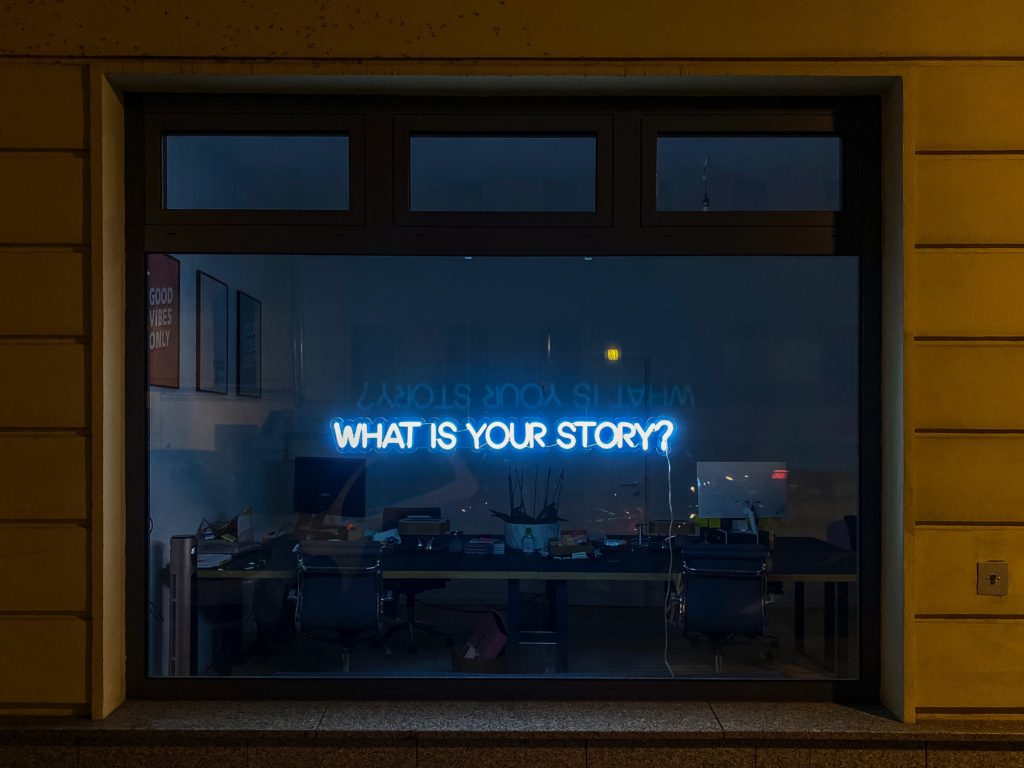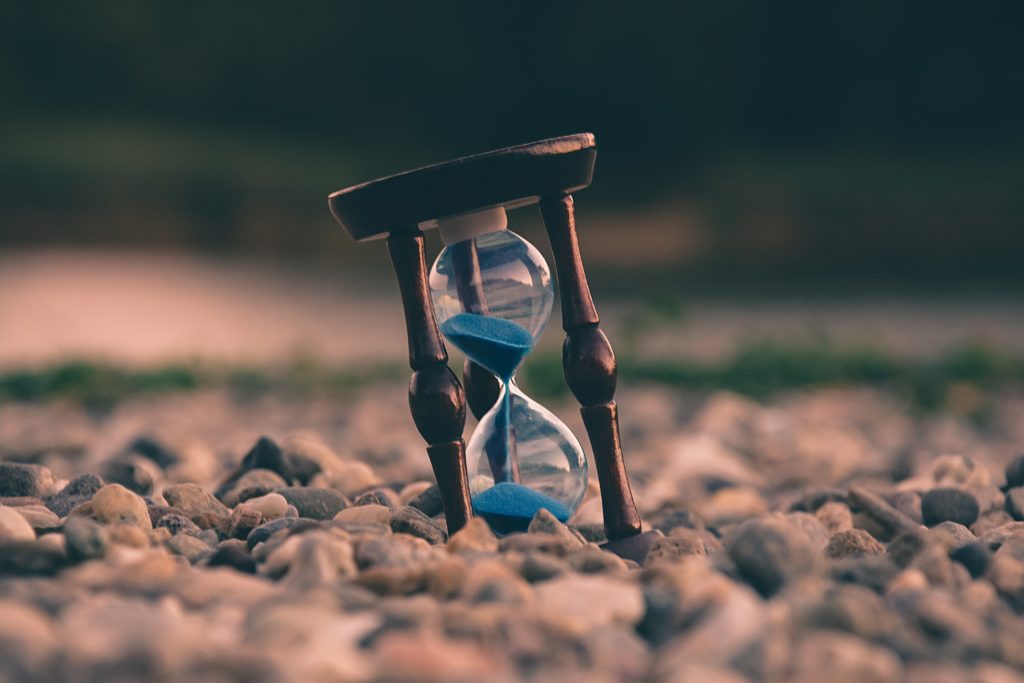Add your feed to SetSticker.com! Promote your sites and attract more customers. It costs only 100 EUROS per YEAR.
Pleasant surprises on every page! Discover new articles, displayed randomly throughout the site. Interesting content, always a click away
Christopher Valdheims
Writing, co-creating, and finding creative voiceStand Out in a Sea of AI: Master This in the Age of Automation 19 Jun 2023, 11:05 pm
Make moves now to develop the one thing that AI can’t replicate.

I’ve been a creative person all my life, but I’ve struggled to express my creative voice for most of my life. The reasons for that involve a chaotic childhood and everything that came after, but that had been my situation for quite a while.
Recently, I’ve turned a corner on that and learned how to find and develop a creative voice in a way I hadn’t.
So, I wanted to share some of what I’ve learned because I know many of you are on the same path of rediscovering and developing your creative voice.
The Importance of Finding Your Creative Voice
Everyone has something important to say, whether that’s a viewpoint, experience, or talent.
Here’s what everyone doesn’t have: a developed creative voice with which to say it.
I want to be clear that “being creative” and “having a creative voice” are two entirely different things. You can be creative yet never voice that creativity or share your viewpoint with others.
Been there, done that. I detested it.
Finding your creative voice is freaking critical because expressing ourselves to others leads to fulfillment. I’ve spent decades unfulfilled because I could never quite express myself fully. It’s not that I didn’t have anything to say; it’s just that I didn’t know how to say it, so I always had this underlying sense of unease and dissatisfaction.
I’ve talked to many people who feel the same way, so I know it’s a thing.
Also, finding a creative voice is even more crucial in a world where AI-generated art exists. The technique may become commoditized, but a distinct voice will command a premium because people seek connection with others through shared experiences and stories—something that AI cannot replicate.
So finding your creative voice means standing out in what will inevitably become a sea of cookie-cutter AI creations.
Embracing Your Journey
Finding a creative voice has been a journey to hell and back.
I think I lost my creative voice to the same forces that every human confronts. Pablo Picasso sums it up like so: “Every child is an artist. The problem is how to remain an artist once we grow up.”
Lots of us don’t make it. And lots of us wish we did.
That means a journey back.
And as someone on this journey, I understand the challenges and rewards along the way. But the key is to embrace it as an ongoing process. Even writing this article represents one step along my journey to reclaim my creative voice.
The essence of the journey back to creative voice involves contending with rejection and judgment and learning to get comfortable with both of those nasties.
It’s hard but feels great when you do.
Developing Your Creative Voice
As artist and author Austin Kleon said, “The only way to find your voice is to use it. It’s hardwired, built into you. Talk about the things you love. Your voice will follow.”
The best way to develop a creative voice is to use a creative voice. It’s a practice, like almost everything else worthwhile.
For me, the practice involves not just making stuff (which is the part that comes naturally to me) but putting stuff out there for people to see (which is the vexing part for me).
It’s the practice of blowing past the internal resistance that wants you to keep your best shit in a drawer on a desert island that builds up a creative voice. The harder it is to push through, the bigger the gain.
And what’s great is that we live in a world with social media and sharing platforms that let us do this almost immediately.
Three Actionable Steps for Reclaiming Your Creative Voice
If I had to reduce everything that I just said into a few actionable steps, here they be:
- Engage with your passions: Dive into the topics and activities that interest you the most. As you explore these areas, your creative voice will emerge naturally.
- Embrace vulnerability: Share your work with others, even if it feels intimidating. Overcoming the fear of judgment and rejection is a significant part of developing your creative voice.
- Be consistent and patient: Progress may be slow, but keep showing up and sharing your work. Like a muscle, your creative voice will grow stronger with consistent use.
Conclusion
I genuinely believe that finding a creative voice is the most transformative journey that you can take. This process leads to more connection and fulfillment and gives power to my other efforts.
Get more insight in Episode 4 of the Hypermemoir podcast.
Creative Liberation: How to Recognize and Overcome Limiting Stories 2 May 2023, 7:42 pm
Transform your inner narratives to cultivate authentic creative expression.

If you think you see the world as it is, you’re fooling yourself.
You see the world filtered through stories.
Stories that you’ve collected throughout your life. Some of these stories help and inspire, while others hold you back.
But if you can’t see your stories clearly, you become bound by them.
I’ve long harbored many stories about creativity and my ability to create something new. However, only in the past few years have I learned how to take steps to uncover the unhelpful versions of these stories and replace them with something new.
So I wanted to share how to recognize and challenge stories that limit our creativity and then provide actionable help for you to find and develop your creative voice.
How Limiting Stories Crush Creativity
Stories help us make sense of the world. It’s how our mind makes meaning and helps us survive.
In the book “Mind Your Mindset,” authors Michael and Megan Hyatt discuss how this all works. They explain that we tend to perceive events and experiences as cause, story, and effect rather than cause and effect.
In other words, our internal stories create a mental model that we use to explain the world.
Our brains are wired for stories – stories we hear from others and tell ourselves.
Recognizing Limiting Stories
To overcome limiting stories, we must see them.
Some of the future classics that I uncovered and moved beyond (mainly) include such limiters as:
- I’m too old to start something new.
- People won’t understand what I am trying to say.
- I’ll never be as good as [insert talented artist/creator here], so why bother?
- I will alienate friends and family if I change.
And so on. I’ve got thousands of stories like these that tend to hold me back. We all do.
Mine came from my childhood’s murky, chaotic depths, so they largely stayed invisible, where they could do the most damage.
Challenging Limiting Stories
To challenge limiting stories, I’ve had to make them visible.
I’ve tried a few things to make stories visible, but the most immediately valuable technique is journaling.
You don’t need to get too complicated here.
For journaling, just writing down the story suffices. By literally making it so I can see my stories in black and white, I can see them more clearly. I also prefer to do it long-hand (for some reason, adding muscle movement seems to make things stick better).
What is interesting is that as you journal, not only do you get to see your stories in the whole light of day, but you get to interrogate them a little more.
For each of my stories, I find unquestioned assumptions that underpin the story. Then, once I get to that assumption, I can shift the story built on top of it.
For instance, if I look at the story “I’m too old to start something new,” I find the assumption that there’s an upper limit for creativity, which is complete bullshit and not a belief that I consciously subscribe to. But for a long time, I behaved as if this was true.
Writing it all down made the contradiction apparent to me.
Transcending Limiting Stories Changes Culture for the Better
As a little postscript here, I will add that changing our limiting stories and developing a creative voice has a significant societal impact.
Transcending our stories shifts culture for the better.
The most potent artists, musicians, and creators all seem to defy expectations. They move beyond stereotypes or default roles and show everyone a new way to live or be in the world.
To do that, they had to transcend the stories placed upon them, just like I am talking about here.
Creativity Unchained: Unlocking the Secret to Making Time for Creativity 21 Apr 2023, 7:16 pm

You don’t “find the time.”
You take it by force.
When I told my friend I had been writing and had nearly completed a book manuscript, her response was familiar: “where do you find the time?!?!”
She knew I was a business owner, a father, a husband, and a few other minor roles.
“I don’t find the time. I take it by force.”
I was being a little bit funny, but I was also being honest. Finding the time to do my creative work does take an element of force.
It’s too easy for me to spend the day in mindless doomscrolling mode or ticking off meaningless tasks to chase the elusive feeling of being “productive.”
Our art withers because these things consume our time, and it’s easier for us to blame lack of time rather than face the discomforting reality that we’re afraid to step forward and use our creative voice.
Why we struggle to find time for our creativity
In the past, I would look back and see that weeks had passed since I wrote, made music, drew, or did anything to give myself creative fulfillment.
Looking back like that felt like looking back over an arid desert. Maybe I made progress on some other stuff (yay, me), but I also felt a serious lack of fulfillment.
Time would “get away from me.”
This time slippage surely ain’t a new problem, and the Stoic philosopher Seneca said as much:
when [time] is squandered in luxury and carelessness, when it is devoted to no good end, forced at last by the ultimate necessity, we perceive that it has passed away before we were aware that it was passing. So it is—the life we receive is not short, but we make it so, nor do we have any lack of it, but are wasteful of it.
Time races by before we even notice it happened. I’m guessing you have at least some familiarity with this.
It’s not just a lack of time, though. That would be bad enough. Unfortunately, it’s also how the nature of our world seems to push creative work to the back of the line.
So, it’s not just a personal issue but also a societal struggle.
As author Neil Gaiman reflects, “the world always seems bent on trying to shut out the creative impulse.”
There’s always something more important than creative work, and there always will be.
Unless we push back.
Prioritizing creative work – taking it back by force
When I told my friend I took time back by force, I also explained how I did it.
And I didn’t do it all at once, sweeping my calendar clear of every other obligation so that I could pursue my creative work.
I explained that I wrote much of my book in 15-minute increments. Even when my kids were young and my fledgling business demanded my full attention, I felt fine taking 15-minute pockets of time to do something the gods demanded of me: creativity.
In “4000 Weeks: Time Management for Mortals” (essential reading, btw – it’ll change your view on the substance of time), Oliver Burkeman describes this approach as “incrementalism.” Instead of finding vast chunks of luxurious time to create, we stake out small pockets and do it consistently.
Just like we do with things like showering, they become relatively non-negotiable.
I also noticed that as I consistently showed up to these 15-minute blocks, more and more time became available. Making an incremental commitment made room for more and more time.
And even when I couldn’t get more than 15 minutes daily, those 15-minute chunks added up. I wrote at least one book that way. Mostly.
A few more actionable ways to take back your time
- See how you’re using time. Take a look at how you’re spending your time now. Go to Screen Time or the equivalent and see where your time is going. You might be unpleasantly surprised, but that’s OK. Now you know what you’re up against.
- Honor your creativity. This may be the hardest one, but it’s the essential one. If you undervalue your creative worth, none of these things will work. Your creative voice is critical. Show up for it. Treat your creative time as sacred.
- Stake out the time. Schedule your time for creativity, whether in 15-minute chunks or 2-hour blocks. Treat it as sacred and keep it like a meeting with a boss or client.
- Set specific goals. If the goal is nebulous, it’s hard to want to make time for it. Set concrete creative goals, like “finish a story by November” or whatever, so that when you create, you know where you’re headed. The vision will take you far.
- Kill distractions. Like everyone, I’m a phone zombie, much more than I care to admit. I help myself by severely limiting the notifications I get, and I am a massive user of the Forest app to make it hard to distract myself (I don’t want to kill the cute little trees).
So what now?
It’s simple. Take that first bit of time by force. I know that 15 minutes doesn’t sound like a ton, but the exercise is about staking out that first bit of time and then expanding.
Do what you have to do to stay connected with your creative voice – and while it might seem selfish at first, it’s not. For example, I can say that I show up better as a father, husband, and colleague when I have the time I need to create.
Try some of the suggestions above, and let me know how it works for you.
How To Break The Paralysis of Perfectionism 18 Apr 2023, 2:57 am
Uncover the life-changing benefits of sharing your creative work, breaking free from fear, and cultivating authentic artistic expression.

“Have no fear of perfection – you’ll never reach it.”
– Salvador Dalí
I have many mostly-finished and up-and-coming creative projects that died before they could thrive.
The killer: perfectionism.
Perfection has long held me back, aided by its ugly, just-as-evil twin: fear of rejection.
Instead of risking rejection by others, I habitually rejected my less-than-perfect works. The amount of regret I feel about that staggers me.
Lately, I’ve learned that I’m not alone in this. Many artists, writers, and creative people grapple with this challenge daily.
But let’s talk about the power of sharing creative work, getting the repetitions in, and embracing authenticity to unleash our creative spirits and cultivate meaningful connections with others.
That’s my current path, and I want you to join me.
The Paralysis of Perfectionism
I’ve spent most of my life rationalizing it as “having high standards.”
I didn’t want to put wack shit into the world.
So I didn’t put anything out into the world.
This rationale backfired, and perfectionism became a paralysis that prevented me from sharing my most heartfelt creations with the world. It became exhausting and continually felt demoralizing.
Not recommended.
In her book, “The Gifts of Imperfection,” Brené Brown addresses this issue head-on. She reminds us that true creativity emerges when we stop seeking perfection.
“Perfectionism is not the same thing as striving to be our best. Perfectionism is not about healthy achievement and growth; it’s a shield…Perfectionism is a twenty-ton shield that we lug around thinking it will protect us when, in fact, it’s the thing that’s really preventing us from taking flight.”
The Power of Sharing
As I’ve begun to work through the feelings driving my perfectionism (fear of rejection, judgment, and similar bugbears), I’ve learned to embrace the power of sharing.
And sharing is daunting. I am still getting the hang of it.
It always feels unnerving to share my thoughts, feelings, and heart with random people who may judge or criticize me. But this vulnerability drives creative growth as an artist. There’s no other way.
By sharing, you open yourself up to weak judgments, but you also get helpful feedback and constructive criticism that helps refine skills and develop a voice.
It also opens you up to the community and camaraderie of fellow creatives.
This far outweighs the dumb critiques of random people who float around looking for things to take a crap on (probably because they wish they could put something out there but are too scared).
Getting the Reps In
I’m practicing.
And practice makes perfect. Practice makes progress.
To grow, I’m learning to “get the reps in.” That means creating and sharing regularly, no matter how imperfect or incomplete I feel my work to be. Some things I share will feel polished, while others will feel disjointed. Either way, I am getting them out there.
I’m gaining experience, building skills, and becoming more comfortable with sharing by consistently showing up.
I think of each piece as a stepping stone on my creative path. Some rocks are rough and jagged, while others feel smooth and refined. Either way, each one is a step forward.
Being Authentic
What I love about sharing my creative work is my connections with others. When I share something on my heart, I get an immediate response from others. By letting my true self shine through, I create space for others to let their true selves shine.
To me, that’s fucking golden.
That’s the real money.
I’ve learned that creating something that resonates is less about “perfection” and more about something that fosters deeper connections and feels genuine. Everyone seeks that in a world of polished personas and AI-generated content.
Having Fun, Learning, and Connecting
I’m learning to make the creative journey an enjoyable and enriching experience. As I’ve begun to share more, I’ve learned to open myself up to new opportunities for growth.
And finally, the whole thing is FUN. Learning what people like and relate to has always been surprising and eye-opening. So I’m embracing the process and having fun with my creations.
Will you do the same?
Hello world! 18 Apr 2023, 2:29 am
Welcome to WordPress. This is your first post. Edit or delete it, then start writing!